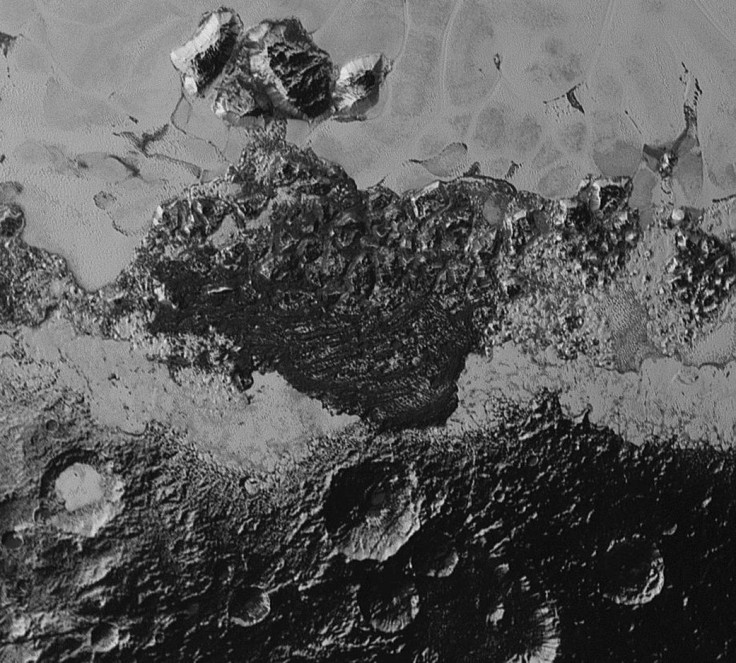New Horizons' Latest, And Best, Photos Of Pluto Show A Bewildering Complexity Of Surface Features

A collection of high-resolution images of the dwarf planet Pluto and its moon Charon, taken by the New Horizons space probe during its historic flyby in July, have finally arrived, and were released by NASA Thursday. The latest images show the oldest, most heavily cratered terrain -- informally named the Cthulhu Region -- seen on Pluto next to the youngest, most crater-free icy plains.
“If an artist had painted this Pluto before our flyby, I probably would have called it over the top -- but that’s what is actually there,” New Horizons Principal Investigator Alan Stern said, in a statement accompanying the photos. “Pluto is showing us a diversity of landforms and complexity of processes that rival anything we’ve seen in the solar system.”

According to Jeff Moore, leader of the New Horizons Geology, Geophysics and Imaging (GGI) team at NASA’s Ames Research Center in Moffett Field, California, Pluto’s surface seems to be every bit as complex as that of Mars.
“The randomly jumbled mountains might be huge blocks of hard water ice floating within a vast, denser, softer deposit of frozen nitrogen within the region informally named Sputnik Planum,” Moore said, in the statement.

Scientists now believe that there might even be a field of dark wind-blown dunes -- a surprising finding that would go against the current estimate of how thick the dwarf planet’s atmosphere is. “Seeing dunes on Pluto -- if that is what they are -- would be completely wild. ... Either Pluto had a thicker atmosphere in the past, or some process we haven’t figured out is at work. It’s a head-scratcher,” William B. McKinnon, a GGI deputy lead from Washington University, St. Louis, said, in the statement.

New Horizons began its year-long download of new images and other data over the Labor Day weekend. In the coming weeks and months, NASA is also expected to release better images of Pluto’s moons -- Charon, Nix and Hydra.
New Horizons completed the Pluto flyby -- its primary mission -- at 7:49 a.m. EDT on July 14, after nearly a decade-long journey through the solar system that took it more than 3 billion miles from Earth. The spacecraft, which is currently more than 43 million miles beyond Pluto, is now heading to the Kuiper Belt -- a region of the outer Solar System made up of objects left over from its infancy.
© Copyright IBTimes 2024. All rights reserved.












